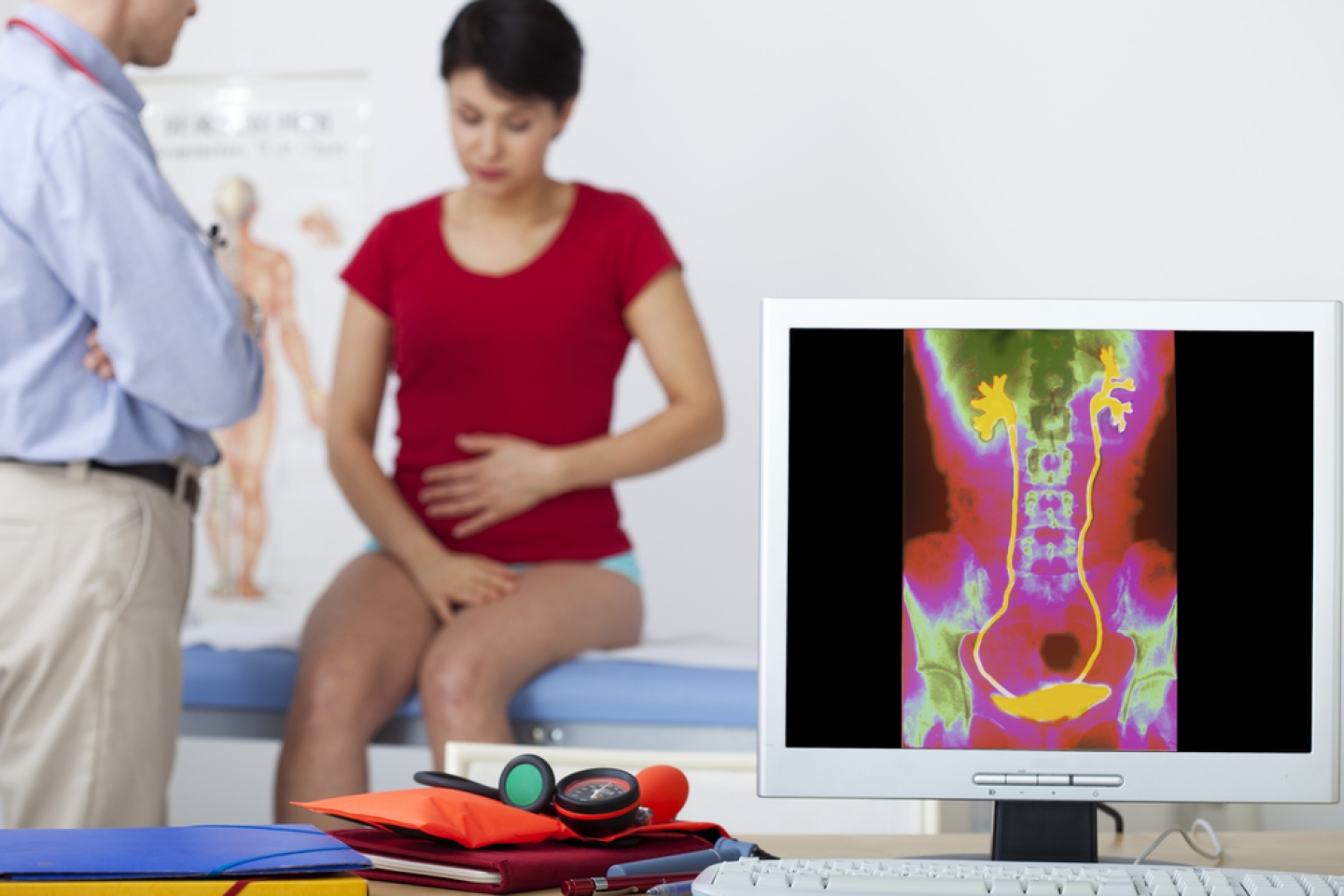
The pelvic floor consists of the muscles that hold the pelvic organs in place, including the bladder, urethra, intestines, rectum and, in women, the uterus, cervix and vagina. Located between the tailbone and pubic bone, these muscles form a “sling” that supports these organs and keeps them in good working order.
According to the National Institute of Child Health and Human Development (NICHHD), a woman may develop a pelvic floor disorder when the muscles or connective tissues of the pelvic area weaken or are injured. The most common disorders are urinary incontinence, fecal incontinence, pelvic organ prolapse—when the pelvic organs drop into or out of the vagina—and chronic pelvic pain.
Urinary incontinence can range from mild leakage after you laugh, cough or sneeze, all the way to full-blown loss of bladder control. Women may develop urinary incontinence during pregnancy, after childbirth or during menopause. Incontinence is the main reason for a loss of independence among older women, requiring them to move into a nursing home. Even though incontinence becomes more common as women age, it is not a “normal” part of aging, says Dr. Larissa Rodríguez, chair of the Department of Urology at Weill Cornell Medicine and urologist-in-chief at NewYork-Presbyterian Hospital.
Roughly 25 percent of women will suffer from at least one pelvic floor disorder in her lifetime, says Dr. Rodríguez, It’s important for women to understand how common these disorders are—especially urinary incontinence. As director of Weill Cornell’s new Center for Female Pelvic Health, Dr. Rodríguez aims to “empower women who have pelvic floor disorders and remind them that they are not alone.”
“The symptoms of a pelvic floor disorder can severely affect a woman’s quality of life,” she adds. These include:
Many women experiencing urinary incontinence learn to wear black pants to hide even a small amount of leakage. They spend a fair amount of money on pads and hygiene products. And they engage in “bathroom mapping” to see what toilets are available for their use when they are out of the house.
Burdened by feelings of shame, a woman experiencing any of the symptoms listed above may start limiting her activities. She may stop going to the movies, staying over at her adult children’s home or playing soccer with her grandchildren. She may forgo having sex altogether.
Worst of all is the silence that surrounds the entire subject. A woman may be too embarrassed to speak about her symptoms, even with close friends and family and with her doctor. Ending the culture of silence and shame is among Dr. Rodríguez’s most cherished goals, just as important as the leading-edge treatments she and her colleagues are providing at the Center for Female Pelvic Health.
Let’s review the most common risk factors that may increase a woman’s risk for developing a pelvic floor disorder:
These risk factors line up with every period of a woman’s life, from youth to midlife and beyond.
The most common disorders of the urinary tract are bladder pain, voiding dysfunction and incontinence.
Bladder pain is most often caused by a urinary tract infection (UTI). While the pain usually eases after a UTI has cleared, some women develop chronic bladder pain, even when no signs of infection remain—a condition called interstitial cystitis. “We don’t fully understand why this happens,” says Dr. Rodriguez, “but we believe some women are predisposed to it either genetically or from past trauma to the bladder, such as repeated UTIs. Stress also seems to be a factor.”
Voiding dysfunction, she says, has to do with poor coordination between the bladder muscle and the urethra, leading to a slow urinary stream, urinary urgency, incontinence or incomplete emptying of the bladder. Incomplete relaxation or overactivity of the pelvic floor muscles during urination can also cause voiding dysfunction; nerve dysfunction may also play a role.
The new Center for Female Pelvic Health offers state-of-the-art diagnostic and treatment options, ranging from the most conservative therapies all the way to advanced reconstructive surgery for severe pelvic organ prolapse.
Non-surgical approaches include:
Physical therapy in particular can help with urinary and fecal incontinence, constipation and pain with intercourse. Additionally, Kegel exercises are a great preventive measure women can take to maintain their pelvic health well before problems appear.
Interventional treatments—those involving medications or minimally invasive procedures—depend on the nature of the disorder. They include:
And as for surgery, most procedures are performed on an outpatient basis under local anesthesia. Occasionally, severe prolapse may require reconstructive surgery, but most surgeries at the center are minimally invasive, with little post-surgical discomfort.
Dr. Rodríguez, an outstanding leader, scientist and clinician, is committed to a vision of health care that addresses disparities and advances the values of diversity, inclusion and diversity. What better living laboratory for her vision than New York City—“a megacity with representation by all the populations of the world,” she says. “At the new Center for Female Pelvic Health, we have an opportunity to understand cultural and racial differences and provide culturally appropriate treatment.”
To help realize her vision, the center has gathered experts across many surgical and non-surgical specialties, including gynecology, urology, rehabilitation medicine and pain medicine. That’s the kind of multi-faceted approach that will bring women’s pelvic floor disorders out from the shadows and into the heart of 21st-century care.
To learn more about female pelvic floor disorders or to make an appointment, visit the Center for Female Pelvic Health’s website at or call (646) 962-9600.